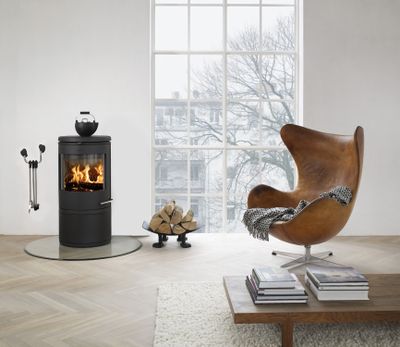A yearn to burn
Wood, pellet stoves are soaring in popularity

For 23 years, Julie Gore has heated her Ada, Ohio, home with a wood-burning stove. When the old one wore out, she didn’t hesitate to buy another for her family room. “It’s warm and toasty,” says Gore, an administrative assistant at Ohio Northern University. “I wouldn’t trade it. If you get a chill you can stand by it and warm up.”
Stoves as secondary heating sources are growing in popularity, and come in two basic varieties: wood stoves and pellet stoves.
Some proponents say the stoves can be more environmentally friendly and help cut energy costs; other experts say that can vary from household to household.
Traditional wood-burning stoves like Gore’s enjoy stronger sales, but pellet stoves, which burn compressed sawdust, may be gaining, according to the Hearth, Patio and Barbecue Association, a manufacturers trade group.
Wood stoves and wood fireplace inserts saw an 81 percent increase in shipments in 2008, the association said. Pellet stoves and pellet fireplace inserts increased 161 percent that year.
Both kinds of stoves are meant mostly to heat specific rooms or groups of rooms, not entire houses. They cost between $3,000 and $4,500 including installation.
The federal government is offering a 30 percent tax rebate in 2009 and 2010 for purchases of wood or pellet stoves that meet a 75 percent efficiency requirement.